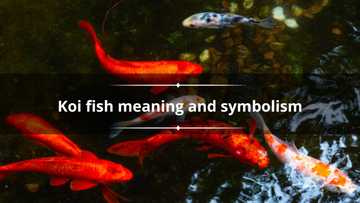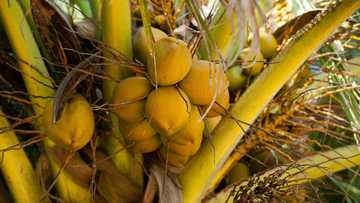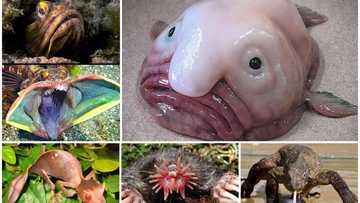Different types of sushi: a complete guide to ordering sushi
Sushi is a Japanese meal comprising rice seasoned with vinegar, seafood, and vegetables. Although many people believe that raw fish is the main ingredient in sushi, rice is the main component. You may be confused when looking at a sushi menu if you are unfamiliar with the dish. This guide will outline the different types of sushi that will satisfy your taste buds.
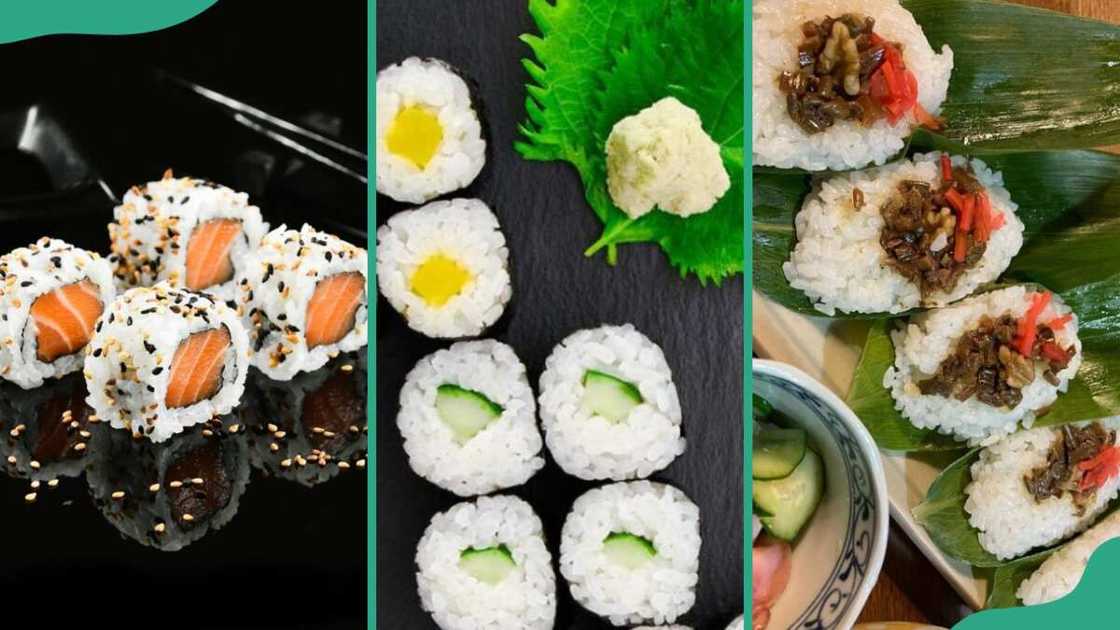
Source: UGC
TABLE OF CONTENTS
Have you visited a meal bar or restaurant and gazed at the sushi menu? The dish is an international cuisine that originated in Japan. The meal has different combinations with this vinegared rice, offering fans a variety. Uncover different types of sushi names that will provide a fascinating fusion of tastes from other places.
Different types of sushi
Sushi is one of the most sophisticated and tasty foods. It is healthy, convenient, and appealing and offers a variety of flavour combinations to try. Although there are primarily 12 different types of sushi, there are more that are less known. Below is a detailed guide to different kinds of sushi you can sample.
1. Nigiri
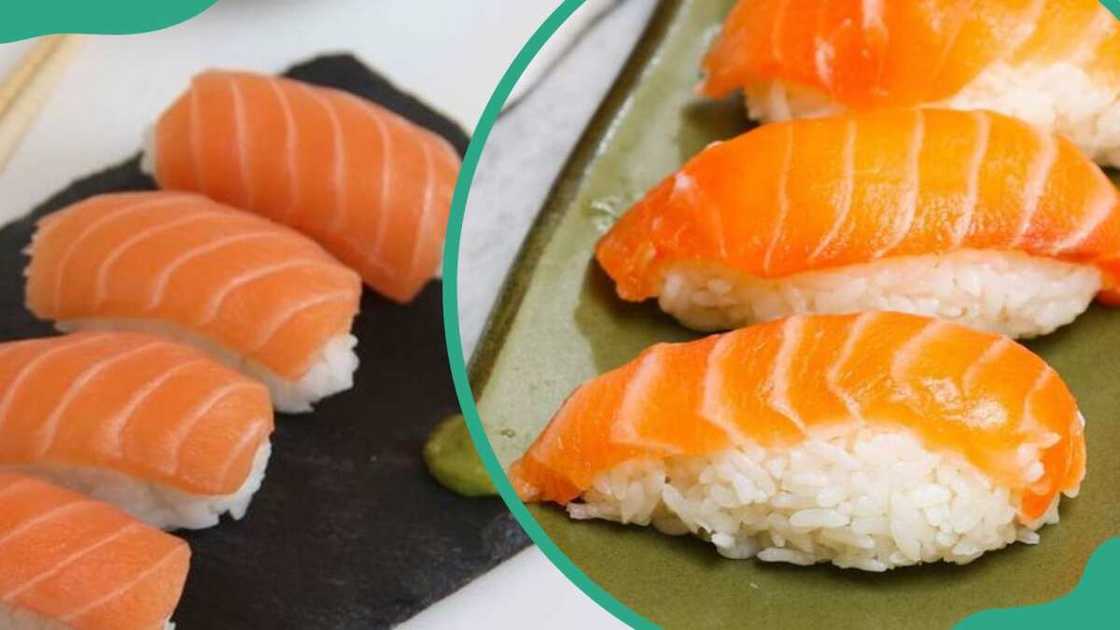
Source: UGC
Nigiri sushi is one of the popular kinds of sushi. It is served alongside raw fish, Tamago (egg), or a type of vegetable. Nigiri is a slice of fish served over a tiny bit of rice.
This dish is rarely served with meat instead of food. It is often paired with salmon or tuna, raw or cooked. This dish appeals to people who want to savour the flavour of the fish and other toppings.
2. Gunkan Maki
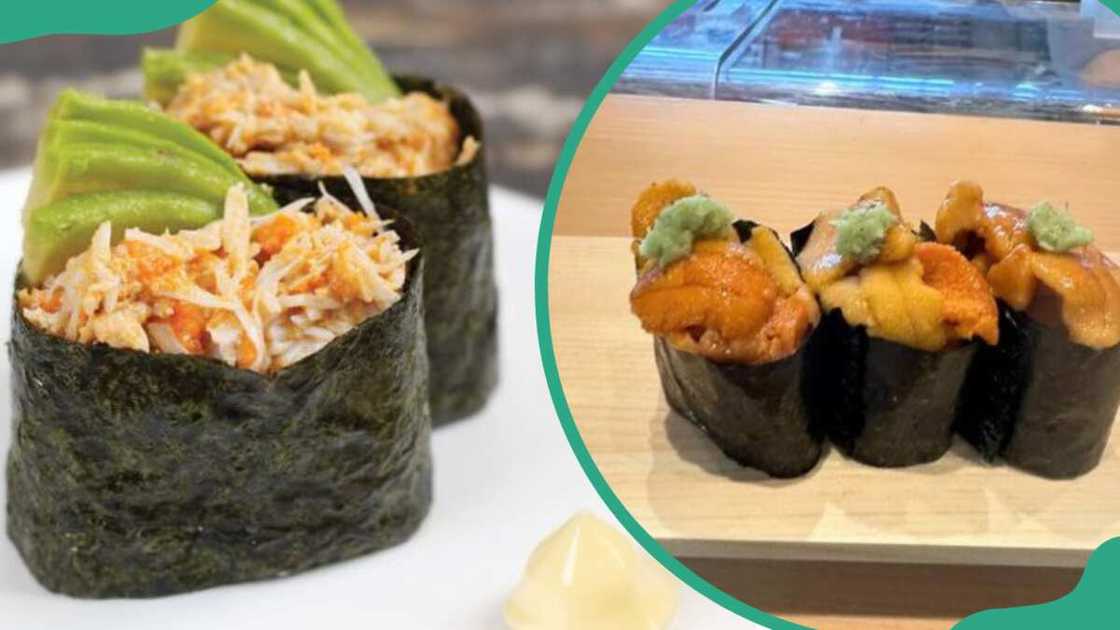
Source: UGC
The second type is gunkan maki. It is also widely recognised as sushi, although it does not resemble the typical makizushi. However, it is still vinegard rice wrapped in seaweed. The toppings mainly used are flying fish roe (tobiko), salmon roe (ikura), and sea urchin (uni).
3. Narezushi
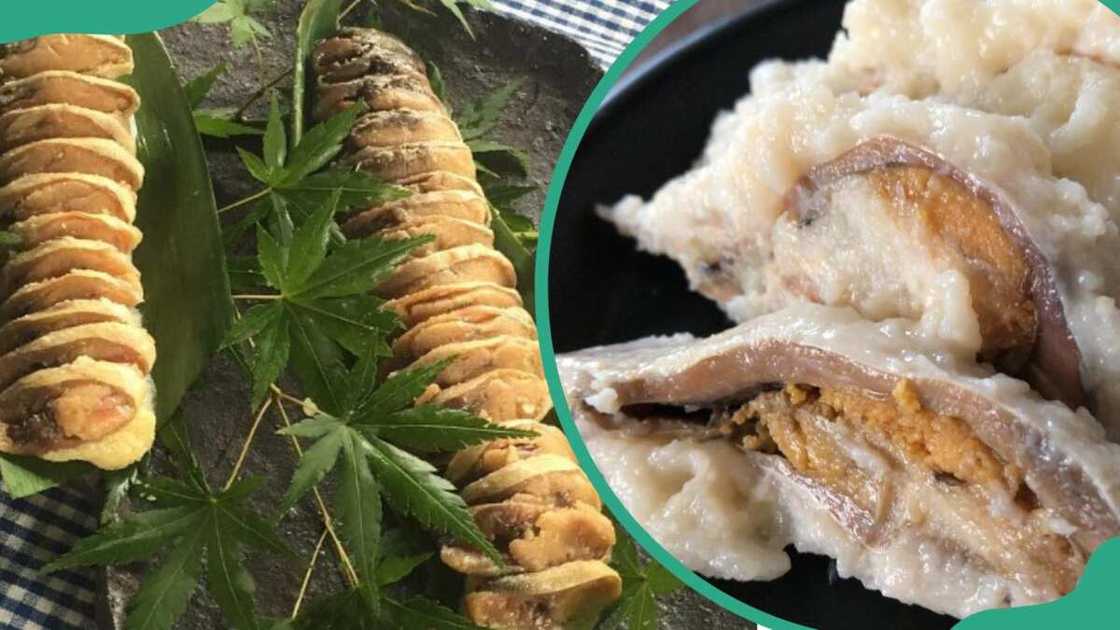
Source: UGC
Narezushi is one of the most ancient types, mainly referred to as the grandmother of modern sushi. It is a fermented form of sushi. Freshwater fish preserved in salt and rice is the main ingredient.
Sometimes, the fresh fish is kept with fermenting for years. However, Narezushi is not popular today because of its intense flavour.
4. Chirashizushi
Chirashizushi is usually a sushi bowl with vinegared rice, raw fish and other ingredients. The types of raw fish used primarily are salmon and tuna.
Shredded egg, nori, and salmon roe are used as a garnish for a colourful and mouthwatering finish. This meal is easy to make and is a popular party food, served as a big platter.
5. Oshizushi
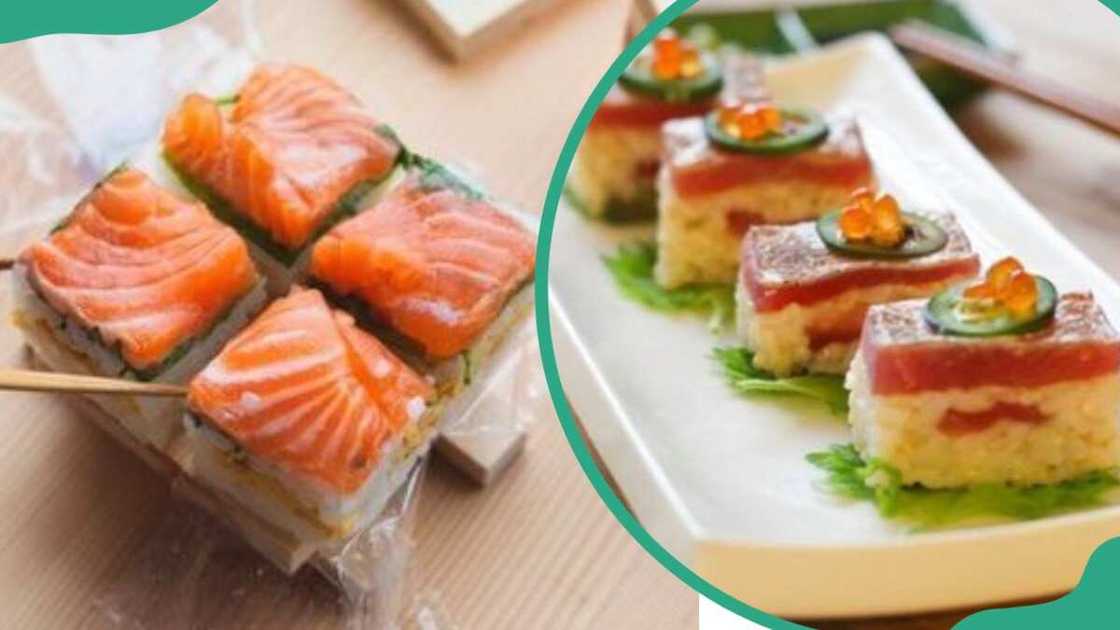
Source: UGC
Oshizushi is translated to "box " or "pressed sushi". It originates in Osaka, Japan and is also one of the oldest types of sushi.
It is considered the successor to narezushi and is made by pressing ingredients into a rectangular mould. Oshizushi is adorned with different types of fish, such as mackerel/ and garnished with persimmon leaves.
6. Temarizushi
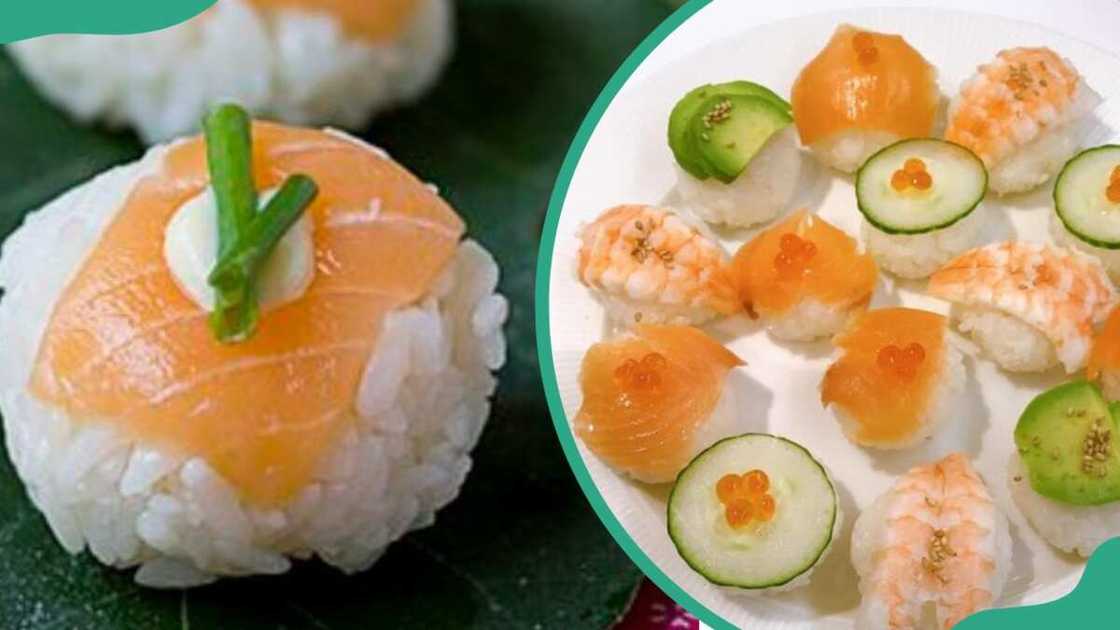
Source: UGC
Temarizushi, translated as handball, is another food class in traditional Japanese sushi. It refers to a traditional Japanese embroidered ball people used to play with. However, the temari ball is nowadays a decorative ornament, not a ball game. Temarizushi is a miniature, cuter nigiri, usually topped with raw fish.
7. Inarizushi
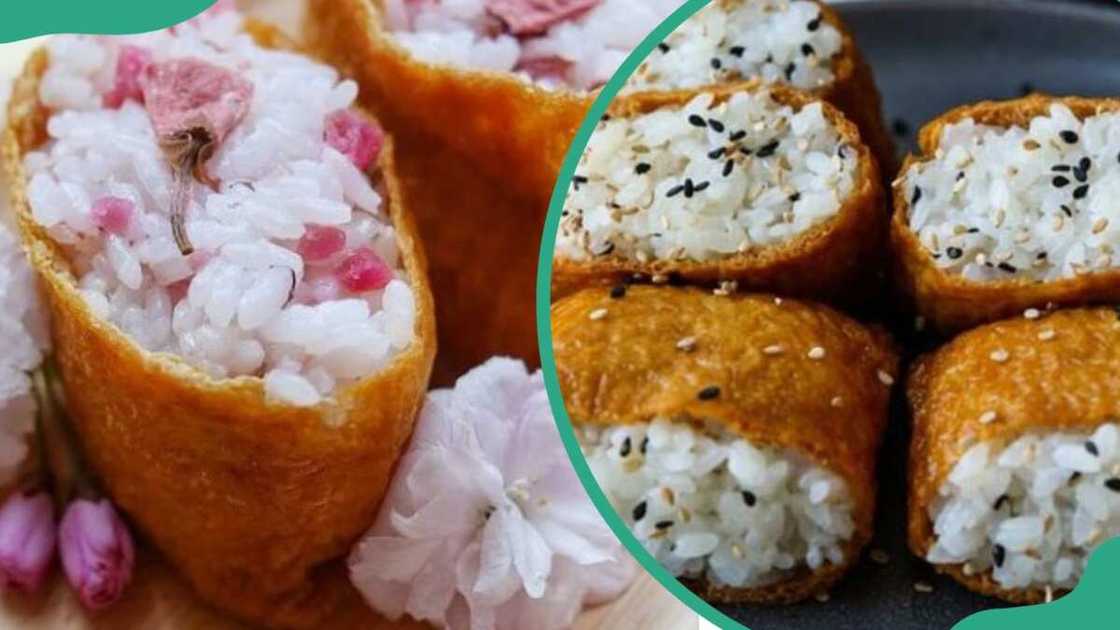
Source: UGC
Inarizushi is another type of Japanese sushi. It comprises a rice pocket of thin, deep-fried tofu (aburaage). Unlike other savoury sushi, it leans more on the sweet side. Often, it is accentuated by a delicacy like the sweet anago, also known as the Japanese conger eel.
8. Sasazushi
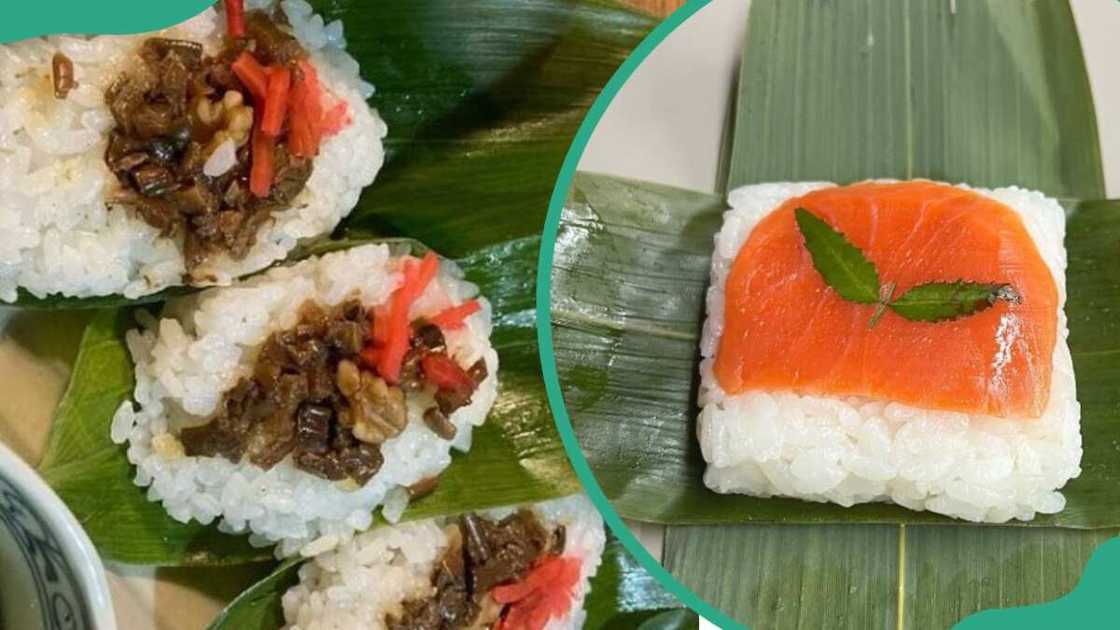
Source: UGC
The sasazushi is one of the rare types. It originates from Niigata and Nagano and is made with wild vegetables. The presentation is done on a bed of sushi rice on a bamboo leaf. This healthy meal utilises fresh produce from the farm.
9. Makizushi
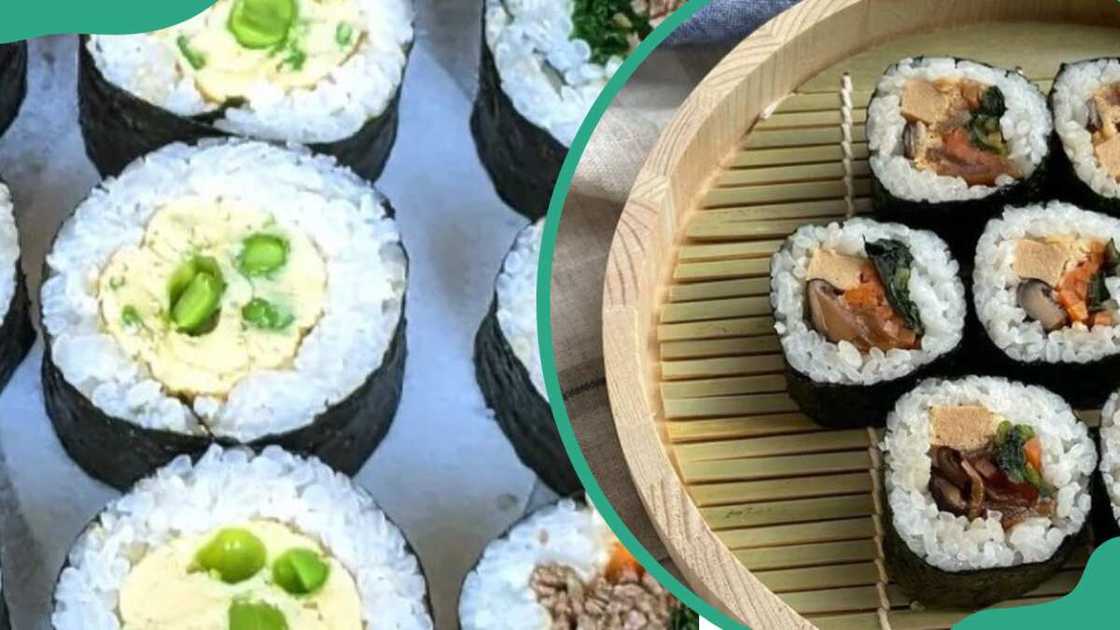
Source: UGC
Makizushi, also known as maki, is the most popular. It is primarily rice with a sheet of seaweed (nori) served alongside various combinations of fish and vegetables.
The yummy treat is firmly rolled into thin tubes and sliced into bite-sized pieces. However, it is at times made with a single ingredient for filling. This type of single-filling makizushi is called hosomaki.
10. Futomaki
Futomaki is one of the different types of sushi rolls under makizushi. Its flavour is one of its strong points.
As the name suggests, it is a thick rolled maki (primarily vegetarian) with cucumber, tamago (egg) strips and shiitake mushroom. It is considered the most classic maki roll in Japan. This sushi roll is best for festive events and gatherings.
11. Temakizushi
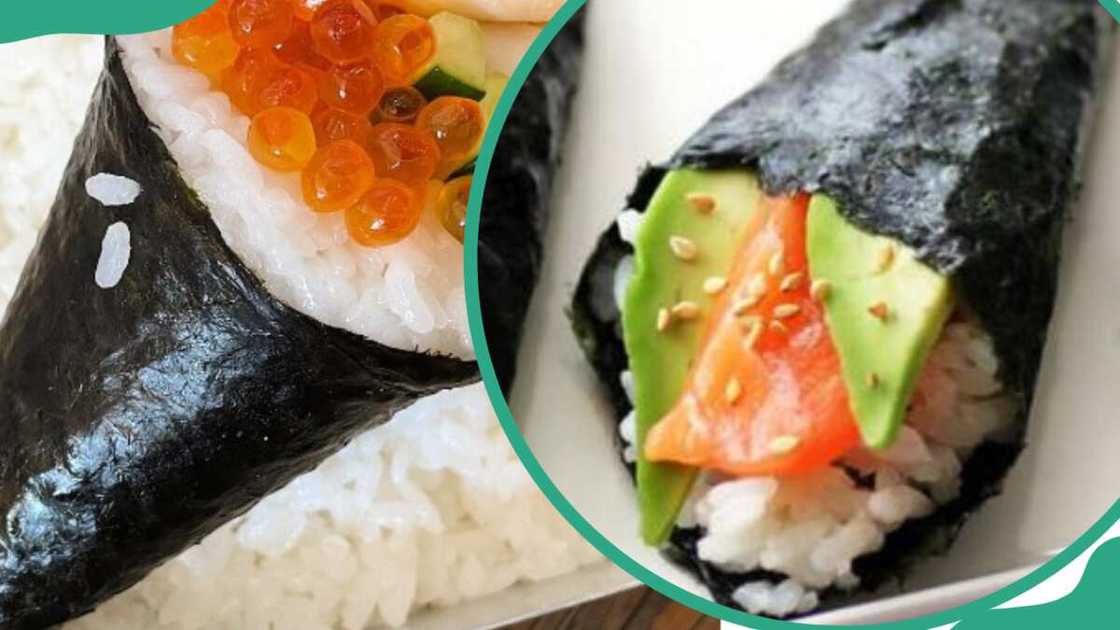
Source: UGC
Temakizushi is another variation of the maki. It is also known as the "hand roll" and appears as a cone shape. The roll is easy to make using ingredients like rice, fish and veggies. Unlike other rolls, it is eaten by hand as chopsticks are messy.
12 Hosomaki
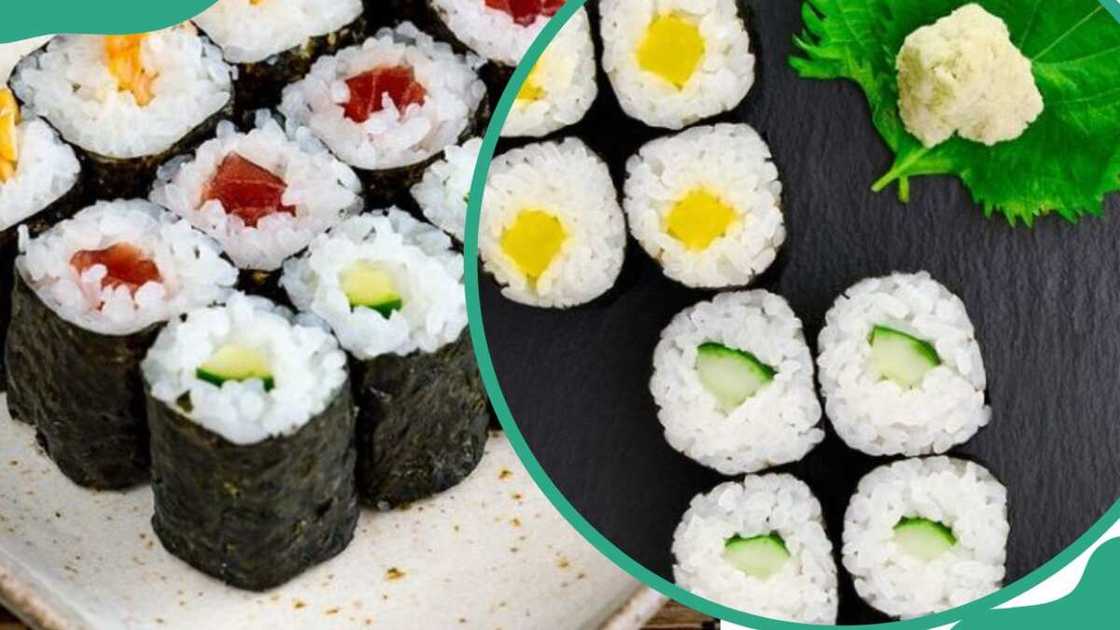
Source: UGC
Hosomaki is the most basic roll type. Unlike other rolls, it has one filling instead of having a variety. It only consists of an ingredient like cucumber, tuna, salmon, or crab stick. It is also the smallest makizushi, and its simplicity is its selling point.
13. Uramaki (Uramakizushi)
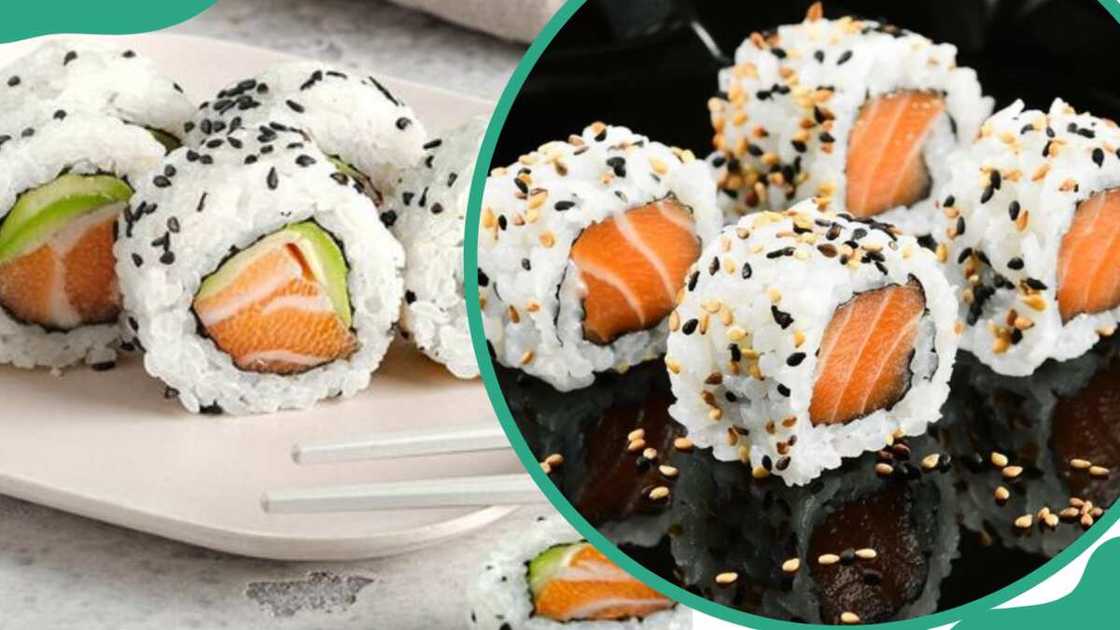
Source: UGC
Another type of maki is the uramaki, also known as the "inside-out" sushi. Unlike the typical rolled sushi, this one has a rise on the outside. The other unique thing about the uramaki is that it traces its origins in Los Angeles, earning the name the famous California roll.
It was first made by Machita Ichiro, who noticed Americans were not fans of the seaweed roll. He decided to put the seaweed inside.
What are the 3 main types of sushi?
The three main types of sushi dishes are nigiri, gunkan, maki and makizushi, also known as maki sushi.
Which is the most popular sushi?
Inarizushi, also known as fox sushi, is the most popular worldwide.
What are the 5 traditional sushi rolls?
Below are the five traditional sushi rolls.
- Tuna roll, also known as Tekka Maki
- Cucumber roll, also known as Kappa Maki
- Soybean roll, also known as Natto Maki
- Pickled Daikon roll, also known as Oshinko Maki
- Eel roll, also known as Unagi Maki
Which types of sushi are raw?
The following are the different types of raw sushi.
- Nigiri is made of raw fish topping served on top of sushi rice
- Sashimi is shellfish or pure fish served without rice.
- Maki is rice and filling wrapped in seaweed.
- Uramaki is made of rice on the outside and seaweed wrapped around the filling.
- Temaki is hand-rolled sushi that looks like a cone shape.
Sushi is a meal that originated in the Japanese culture. It started as a simple vinegar rice and raw fish but has evolved into many forms. If you want unique tastes to indulge your taste buds, try the above types of sushi.
Legit.ng published an article about types of farm records. Record keeping is essential in any business, especially agriculture. There are different farm records every farmer needs to keep to keep track of their input and output. What are the different types of farm records maintained by a farmer?
A farmer needs to know what is happening in his farm by keeping records. Various records, such as finance, farm workers' schedules, and farm inputs and outputs, are required. The records are an excellent way to track the performance of the farm. Learn the different types of farm records kept to ensure a successful farming venture.
Source: Legit.ng


